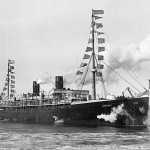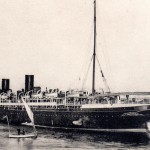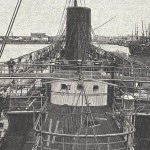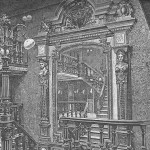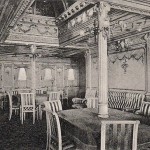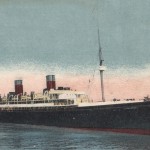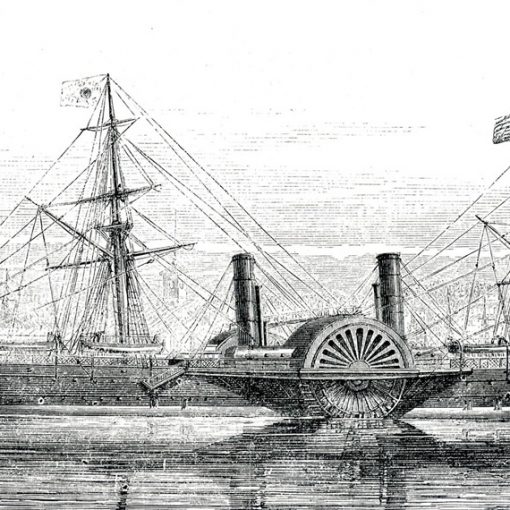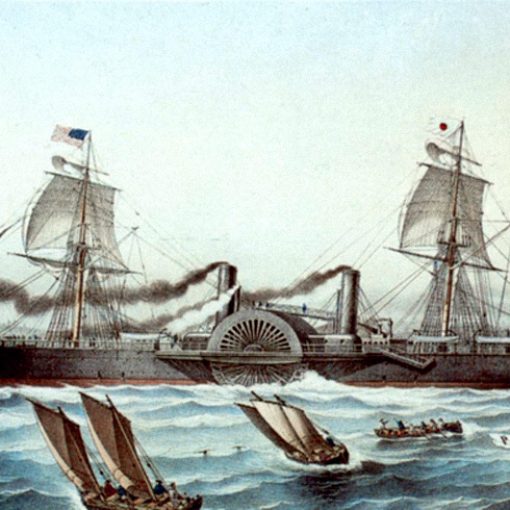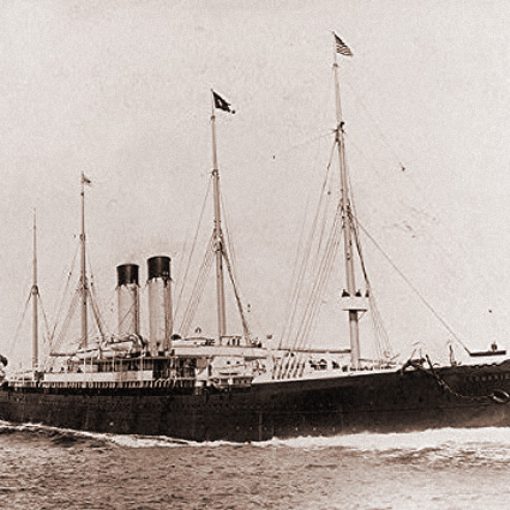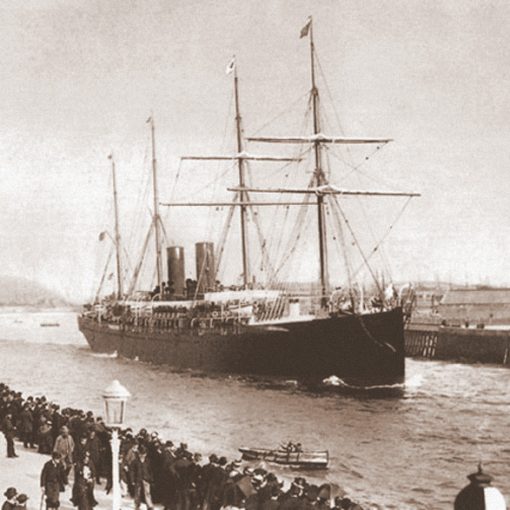1891 – 1923
The French Line had started business with the name Compagnie Générale Transatlantique in 1861. Their first vessel was a Spanish ship, which they bought on the stocks. They named her Lousiane. In time, CGT grew to become one of the most distinguished shipping companies operating on the North Atlantic. Their liners became famous for their elegance and superb service – not their size.
By 1890 the largest ships in CGT-service were the four liners La Champagne, La Bourgogne, La Gascoigne and La Bretagne, all with a gross tonnage of roughly 7,500 each. Compared with the tonnage of the largest ship ever built at the time – the Great Eastern at 19,000 gross tons – these four French liners were quite small. If the French Line wanted to compete with these figures they firstly had to solve one great problem; the waters of Le Havre harbour were just about enough to receive the La Champagne-class liners.
When CGT decided on a new ship, they wisely did not aim for size. Instead they intended to continue the tradition of elegance and service. This ship would however be somewhat larger than the La Champagne-class with a gross tonnage of around 9,000. With this ship, the French Line had reached the absolute limit of what the harbour of Le Havre could handle.
On March 23, 1890, the new ship was launched and christened La Touraine. At the time she was the sixth largest ship in the world ever built after Great Eastern, City of Paris, City of New York, Majestic and Teutonic. The following year on June 20, La Touraine completed her maiden voyage between Le Havre and New York as the flagship of the French Line. She managed the distance in a mere six days, seventeen hours and thirty minutes.
La Touraine quickly became one of the most popular liners on the North Atlantic. She became known for her handsome lines and the two widely spaced squat funnels. Passengers seemed to favour La Touraine above many other ships not only because of her appealing appearance – she always managed excellently well in rough weather, and was soon known as the ‘Steady Ship’. This steady ship was also a fast ship – during a July-crossing in 1892 she clocked a record speed of 21.2 knots over the measured mile.
In order to even further stabilise the ship, CGT had La Touraine overhauled twice in 1900 and 1902. Bilge keels were fitted to the bottom of the hull, making La Touraine as smooth as an iron over a linen cloth. The overhauls also included removal of one of the original three masts, and a passenger increase in third class from 600 to 1,000. The overhaul resulted in a decrease of the ship’s gross tonnage – it had gone down to 8,429.
In January 1903, La Touraine was damaged by a very serious fire at Le Havre. The grand staircase, the first class dining saloon and the first class deluxe cabins had been entirely destroyed, and had to be rebuilt. When La Touraine returned to service some time later, she entered the North Atlantic more dashing than ever – the new first class areas became immensely popular.
La Touraine was one of the first French ships to boast an outstanding kitchen. Just as on the much later Île de France and Normandie, she attracted gourmets from all over the world. She was also one of the first French liners to be called ‘a piece of France itself’. The company slogan at the time was ‘You are in France as soon as you cross the gangplank!’ La Touraine was also the first ship with the modern Cabin Class – merging first and second class in 1910. In the old days, the term ‘Cabin Class’ was associated with old, surpassed vessels, but now it started a new era. Together with the new CGT-liners Chicago and Rochambeau,La Touraine sailed into many more successful years of French service.
In 1912, La Touraine made some special Canadian voyages between Le Havre and Halifax and a year later she was placed on the Québec and Montreal summer service. During World War I, La Touraine served as an armed merchant cruiser and later as a troop ship. When the war was over she continued for some years in French Line service, but as the ship began showing signs of age in 1922 she was sold and became a grey-hulled hotel ship in Göteborg, Sweden during the Industrial and Agricultural Fair. For this occasion, La Touraine was renamed Maritime. In August she was again offered for sale, and that October she was sold to the breakers at Dunkerque.
Specifications
- 536 feet (163.7 m) long
- 56 feet (17.1 m) wide
- 9,047 gross tons
- Steam triple expansion engines powering two propellers
- 19 knot service speed
- Passenger capacity of 1,090 people

